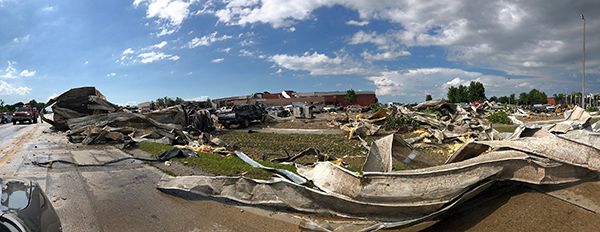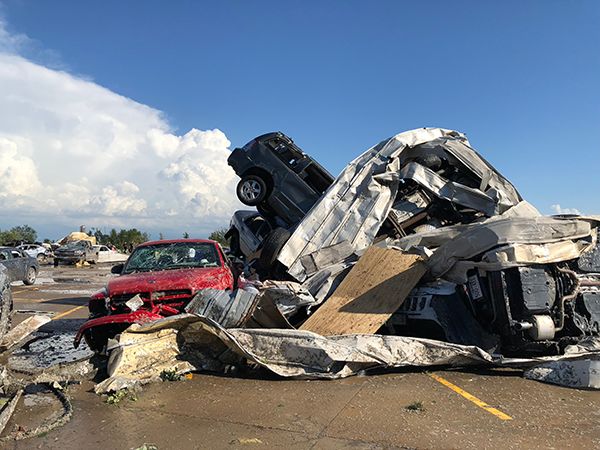Banning State Park was on my radar for a Sunday afternoon hike and the day couldn’t have been much more perfect. The park is located near Sandstone, Minnesota, which is ironic because the park was once a working sandstone quarry that employed 500 workers back in the late 1800s. You can see the remnants of the old power station building as you walk down the Quarry Loop Trail.

Back in the day, people needed the sandstone for construction and, based on what I saw, there’s a lot of it even to this day. Evidently, the strength of the stone and the pink coloring were in high demand by construction companies.
The place has actually seen its share of tragedy. On September 1 of 1894, the great Hinckley forest fire swept through the area, doing a lot of damage to the quarry and the St. Paul and Duluth rail line that was serving it.

in what is now the Banning State Park near Sandstone, Minnesota. (Photo by Chad Smith)
The business got going again and by 1896, a village was established right above the quarry. It was named in honor of William L. Banning, the President of St. Paul and Duluth Railroad. The village was quickly incorporated into a town of 300 people in 1900. However, the end was in sight for the quarry.
Steel began to take over the construction industry shortly after the dawn of the new century. By 1905, all work at the quarry had come to a close.
As you can probably imagine, with that many trees close together, fires continued to be a problem, and the town of Banning basically ceased to exist in 1912. All that’s left of the quarry itself are a few weathered ruins I have pictured here and on my Facebook page (Link takes you to my photo album).

Banning State Park was officially established by the Minnesota legislature in 1963, containing more than 5,200 acres. The park was expanded a couple times over the next decades, the last coming in 1986 with total acres numbered at 6,237.
A 10-mile stretch of the Kettle River runs through the park and it is absolutely beautiful. There actually was a dam in the river at one point, but the local Sandstone community, the Department of Natural Resources, and the Pollution Control Agency came together to remove the dam back in 1995.

the Banning State Park. I would love to know what it looked like when the place was
active. (Photo by Chad Smith)
If you like to ride the rapids, you’ll have options up at Banning State Park. The Kettle River includes five pretty spectacular rapids, including Blueberry Slide, Mother’s Delight, Dragon’s Tooth, Little Banning and Hell’s Gate. The Minnesota DNR website says those rapids will give you one of the most challenging whitewater experiences in the state.

Gate” Trail. (Photo by Chad Smith)
It’s beautiful up there. I was totally shocked at the piles and piles of sandstone that are still there to this day. Park workers carved trails directly through several sandstone walls and I bet that took a ton of time to do properly. I’ll admit, the sandstone was fun to climb on but if you aren’t wearing boots, it gets a little slippery. Call it a lesson learned.

to the park sign. (Photo by Chad Smith)
You can get a map at the park entrance and it costs just seven dollars for a day pass, which I thought was a really good deal. I will tell you that you need to stay on the Quarry Loop Trail if you want to see the old buildings. The signs refer to the Quarry Loop Trail as the “self guided” trail on signs along the way. I’ll warn you and say the trails get a little confusing if you aren’t paying attention and don’t have your map.
Another lesson learned.
I was hoping to see a little wildlife but the best I could do was a woodchuck that ran across my path. Oh well. Make sure you take bug spray. You’ll need it!


by Chad Smith)

Smith)


